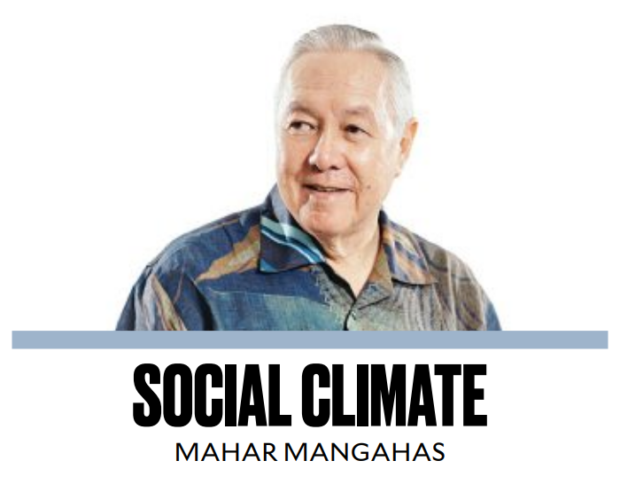As I analyze the data, it’s evident that the economic recovery from the pandemic is still incomplete. We shouldn’t jeopardize it by diverting our attention to a financial megadeal that likely won’t have a significant economic impact on most Filipinos. A full recovery means attaining the same situation as in 2019, where each quarter saw a larger number of Filipinos improving their economic status (the “gainers”) compared to the previous year. By the end of 2019, there were 39 percent gainers and only 21 percent losers, resulting in a net gain of 18 points nationwide. It’s important to note that these statistics measure the well-being of people, not the production value. What truly matters is the welfare of individuals, unless improving the bottom lines of businesses also benefits the majority of people.
According to the Social Weather Stations (SWS) survey, every region in the Philippines had a surplus of gainers in December 2019. The National Capital Region (NCR) had a surplus of 22, Balance Luzon had 18, Visayas had 14, and Mindanao had 16. Additionally, every educational group experienced a surplus: elementary dropouts had 12, those with some junior high school (JHS) had 12, those with some college had 20, and college graduates had 28. This data shows a clear correlation between education and improvement, with those who are more capable of growth seeing greater advancements.
However, catastrophe struck in 2020, causing the net gainers to plummet to unprecedented levels in the minus-70s. In 2021, the deficit partially improved to the minus-40s and minus-30s. From 2022Q1-Q3, it remained around -2 to zero, indicating a neutral position. But now, we can see that net gainers are slowly recovering, currently at a single-digit positive of +5 according to the First Quarter 2023 Social Weather Survey. This current score is considered “high” based on historical data, as out of 148 national surveys conducted since 1983, only 23 surveys reported more gainers than losers.
The present net gainers score is not evenly distributed across regions. It is highest in Balance Luzon at +12 (an increase of 2 from 2022Q4). Mindanao follows at +6 (a decrease of 4), NCR at +2 (a significant decrease of 16), and Visayas at -14 (a decline of 10 from 2022Q4). Not all educational groups are experiencing positive outcomes either. The new net gainers scores are +20 among college grads, +7 among those with some college/tertiary schooling, +1 among those with some JHS, and -5 among elementary dropouts.
Educational poverty is a pressing issue that requires a solution. In the SWS March 2023 national sample of adults, only 10 percent are college graduates, 48 percent have some college education, 28 percent have some junior high school education, and 14 percent are elementary dropouts. With such low educational attainment, it’s no surprise that the Self-Rated Poverty (SRP) in households reached 51 percent in both 2022Q4 and 2023Q1. The SRP has never been lower than 38 percent, which was recorded in 2019Q1.
For me, a full recovery to pre-pandemic times would mean an SRP of no more than 45 percent, which was the average in 2019. The situation regarding Self-Rated Food Poverty (SRFP) is far from recovered. In fact, it has been increasing instead of decreasing, reaching 39 percent in a recent report. To achieve a full recovery in terms of SRFP, we should aim for a rate of no more than 31 percent, which was the average in 2019. The lowest-ever recorded food-poverty rate was 27 percent in 2019Q1. It’s evident that hunger is still prevalent, although it has decreased to single digits. The pre-pandemic average hunger rate in 2019 was 9.3 percent, a relief after 15 years of steady double-digit average hunger from 2004 to 2018. Hunger reached its highest point in 2012 at 19.9 percent, but in 2020, during the pandemic, it reached a new peak of 21.1 percent. This issue is particularly detrimental in households with young children, as it negatively affects their learning capacity in the long run.
Returning to the times when hunger rates were lower should be the highest economic priority for the Philippines. It’s crucial to find solutions to alleviate educational poverty and improve the overall well-being of the Filipino people.
For more information, please contact: [email protected].
Denial of responsibility! VigourTimes is an automatic aggregator of Global media. In each content, the hyperlink to the primary source is specified. All trademarks belong to their rightful owners, and all materials to their authors. For any complaint, please reach us at – [email protected]. We will take necessary action within 24 hours.


